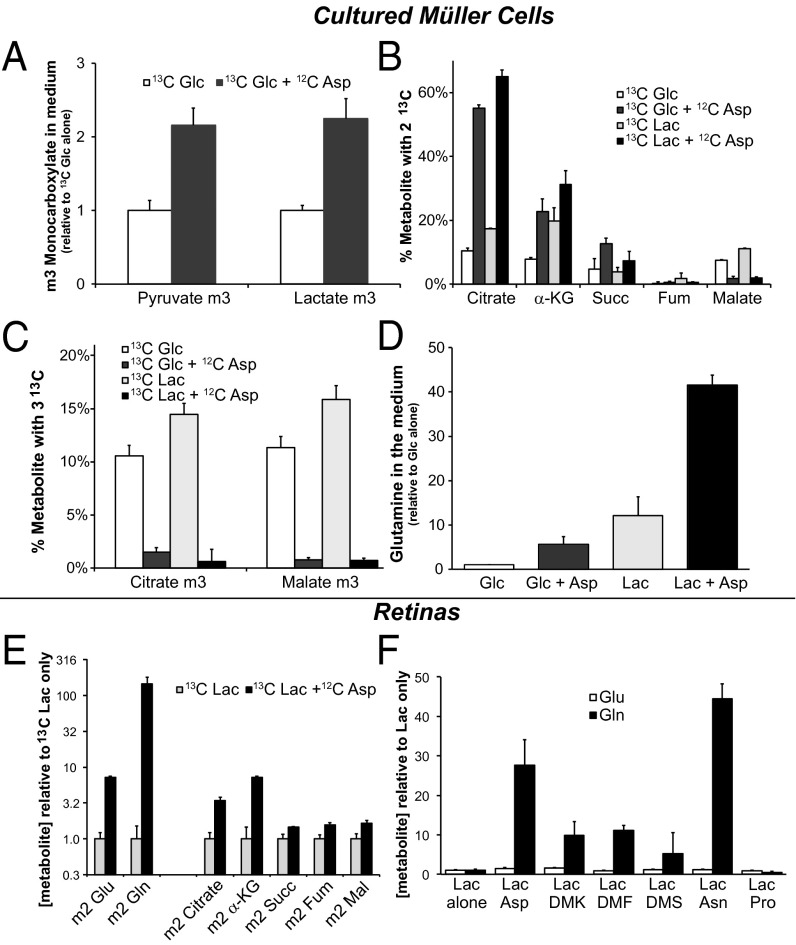Fig. 4.
Asp stimulates Glc oxidation. (A) Isolated MCs were incubated with 5 mM U-13C Glc with or without 5 mM unlabeled Asp for 1 h. The medium was collected and analyzed by GC/MS. (B) Isolated MCs were incubated with 5 mM U-13C Glc or with U-13C Lac (5 mM) with vs. without 5 mM unlabeled Asp for 1 h. The percentage of each metabolite in the M2 isotopomer is shown (n = 3). (C) Pyr carboxylase activity is a significant source of citrate and malate, but only in the absence of Asp (n = 3). The M3 isotopomers of citrate and malate are made by carboxylation of Pyr. Total citrate and malate increased only ∼70% and ∼7%, respectively, when Asp was included. (D) Asp (5 mM) increases synthesis and release of Gln into the MC culture medium (n = 3). (E) Asp stimulates synthesis of Gln from U-13C Lac by MCs in intact retinas (note log scale on y axis). (F) Asp and Asn are the most effective anapleurotic substrates for raising the concentration of Gln in retinas. Retinas were incubated with 5 mM lactate and 5 mM additional substrate for 1.5 h (n = 3). The effect on Glu is much smaller. In mouse retinas incubated with Lac alone, the Glu pool size is ∼130-fold larger than the Gln pool size.

